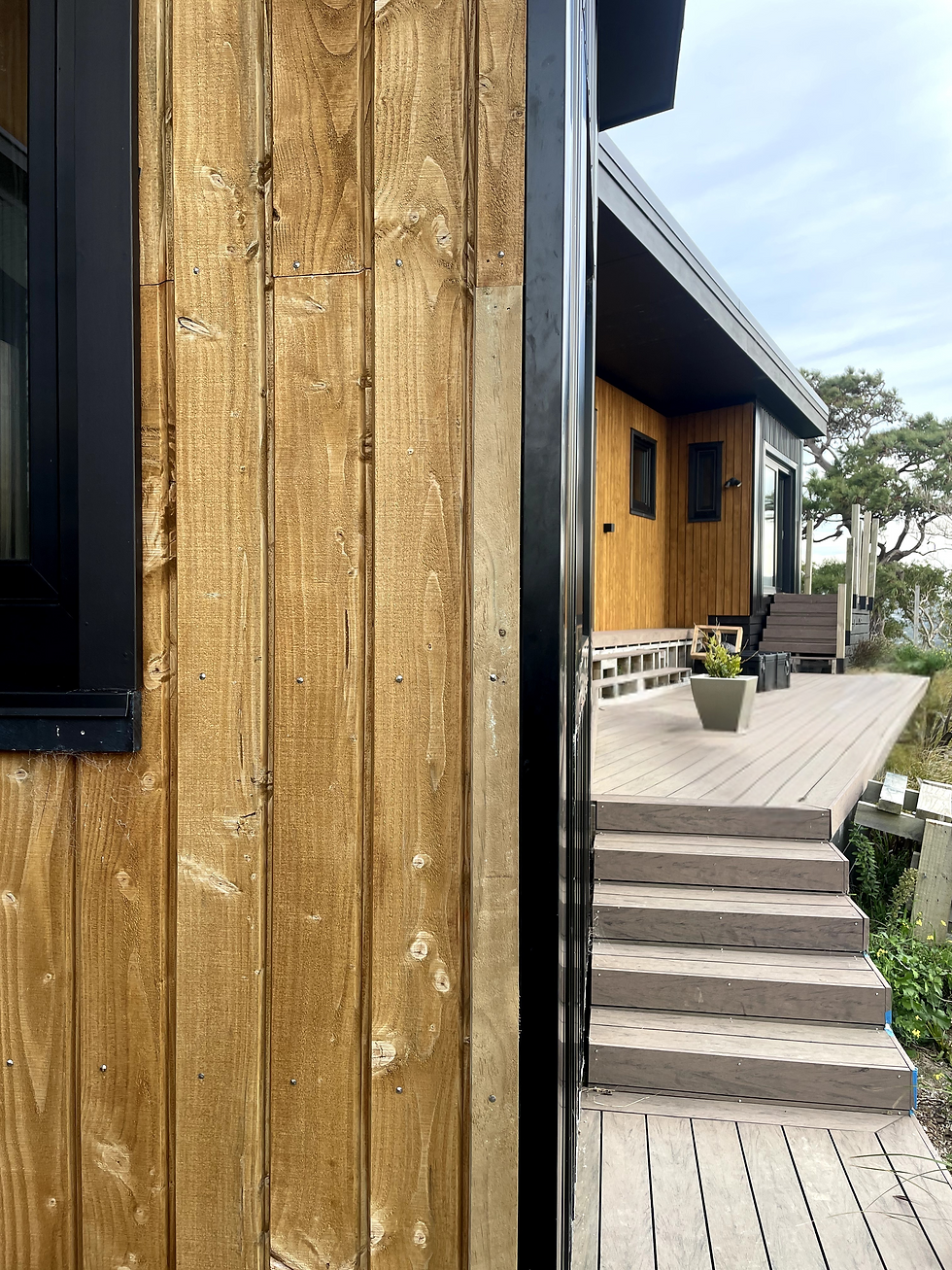Your Top 5 FAQ's on SIPs
- Sheryl Sua
- Aug 12, 2021
- 2 min read
Updated: Jul 5, 2023
Wellington Builders | Design & Architecture Services | Eco-Friendly Design | High Performing Home | Structural Insulated Panels | Energy-Efficient Home

If you’re looking to find more information about structural insulated panels (SIPs), then look no further! Over the years we’ve found the same questions keep popping up. So, we thought to address them all here in one go. Let’s get straight to it!
Are They Recyclable?
Yes, 100%. While we realise that you’re not likely to recycle your home any time soon, we understand that most of us are wanting the assurance that we’re playing our part in being good stewards of the planet. Our panels are made of expanded polystyrene styrofoam (EPS) sandwiched between two oriented strand boards (OSB).
The EPS is 100% recyclable. When the panels are cut to size at the factory, all off-cuts are recycled into new sheets to be used on the next project. At the job site, when our carpenters cut the windows to size and make any other adjustments needed to the panels, all wastage is taken to Expol for recycling.
OSB is made from dedicated logs and uses 90% of the tree compared to structural timber in a timber frame house that only has a yield of 25%.
SIP homes have a greatly reduced carbon footprint over their lifetime when compared to traditional timber homes.
Where are the panels made?
All our panels are made right here in good ole New Zealand! Not only are we supporting our local economy, but this also means there are no shipping delays or additional costs for international freight.
What are the R-Values?
Our SIP panels come in the following thicknesses and R-values:
115mm thick - 2.8
165mm thick - 4.3
215mm thick - 5.7
265mm thick - 7.2
315mm thick - 8.2
For a quick comparison, the minimum R-value requirement in New Zealand for wall insulation is between R1.9 – R2.0, depending on where you live in the country. You can see that even with our thinnest panel, the R-value is well above the minimum requirement.
What Type of Cladding Can I Use?
You can use whatever type of cladding you wish! We cover the external side of the OSB with high-performing building wrap, followed by a cavity batten which in turn can then be covered with your preferred cladding.
The cladding is attached to the OSB itself through the cavity battens, rather than the traditional way (which is onto timber framing). Yes, it’s true that the thickness of the OSB isn’t as thick as timber framing, but because it’s a sheet product, fixings can be placed anywhere.
Please bear in mind that if you choose very heavy concrete or stone cladding, the panels may need additional framing to support the weight.
Bracing
Our panels are very strong and have great ductility (the ability to change form; to be malleable without breaking). This means that they can withstand the applied force of an earthquake incredibly well and they can also take the shock out of the movement by allowing some non-permanent flex in the structure.
For more detailed information about SIPs, check out the A-Z guide here: An A-Z of SIP panels
We hope this FAQ's on SIPs has been helpful but if you have any questions that haven’t been answered here, please do Contact Us – we would love to chat!

.png)



Comments